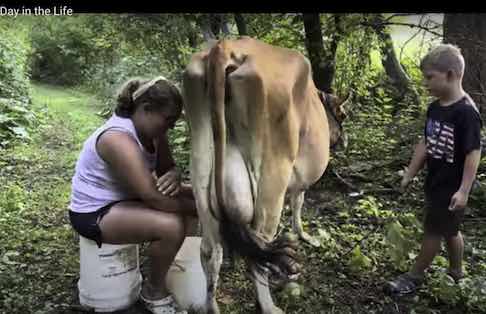
One of the biggest draws to homesteading is the potential it offers for families, and the “homesteading family” is a common sight worldwide. The lifestyle provides an opportunity for families to work together, learn new skills, and form deep bonds. It’s a rewarding lifestyle but it’s not for everyone. If you’re considering transitioning to a homesteading lifestyle with your family, it’s essential to evaluate the resources and risks involved.
A compelling story of such transition can be found with the Zimmerman family, the “Homesteading With The Zimmermans“. This family’s journey provides a vivid illustration of the challenges and rewards that come with life on a homestead. They personify the spirit of this lifestyle, providing inspiration and insight for newcomers and a relatable experience for seasoned homesteaders.
Which brings us to the topic of “homesteading for beginners”. It’s important to understand the homesteading journey is a learning process. It requires considerable time, patience, and resources. When first starting out, it’s advisable to start small — perhaps with a vegetable garden, or a solar panel to supplement your home’s energy needs. Also, there are various “Homesteading Books” out there to educate you on everything from raising chickens to building a solar panel. Take time to learn from others’ experiences and be open to making a few mistakes along the way.
Now, regional variations play a crucial role in homesteading. Different areas bring unique climates, laws, and challenges to the table. Take “Homesteading In Alaska” and “Homesteading In Florida” for example. They couldn’t be more geographically different, yet the same principle applies – adapting and utilizing your environment to live a self-sufficient lifestyle. Whether it be growing citrus fruits in the Florida sun or hunting in the vast Alaskan wildernesses, both environments hold unique rewards and challenges.
In conclusion, off-grid living is about blending old-world skills with new-age techniques. It’s about adapting, learning, and growing to become less reliant on an ever-fluctuating external world. It’s about personal freedom, family solidarity, and sustainable living that can rekindle our connection with nature and with each other. Whether you’re a seasoned homesteader or a curious beginner, remember that every day can unfold a new adventure in off-grid living.